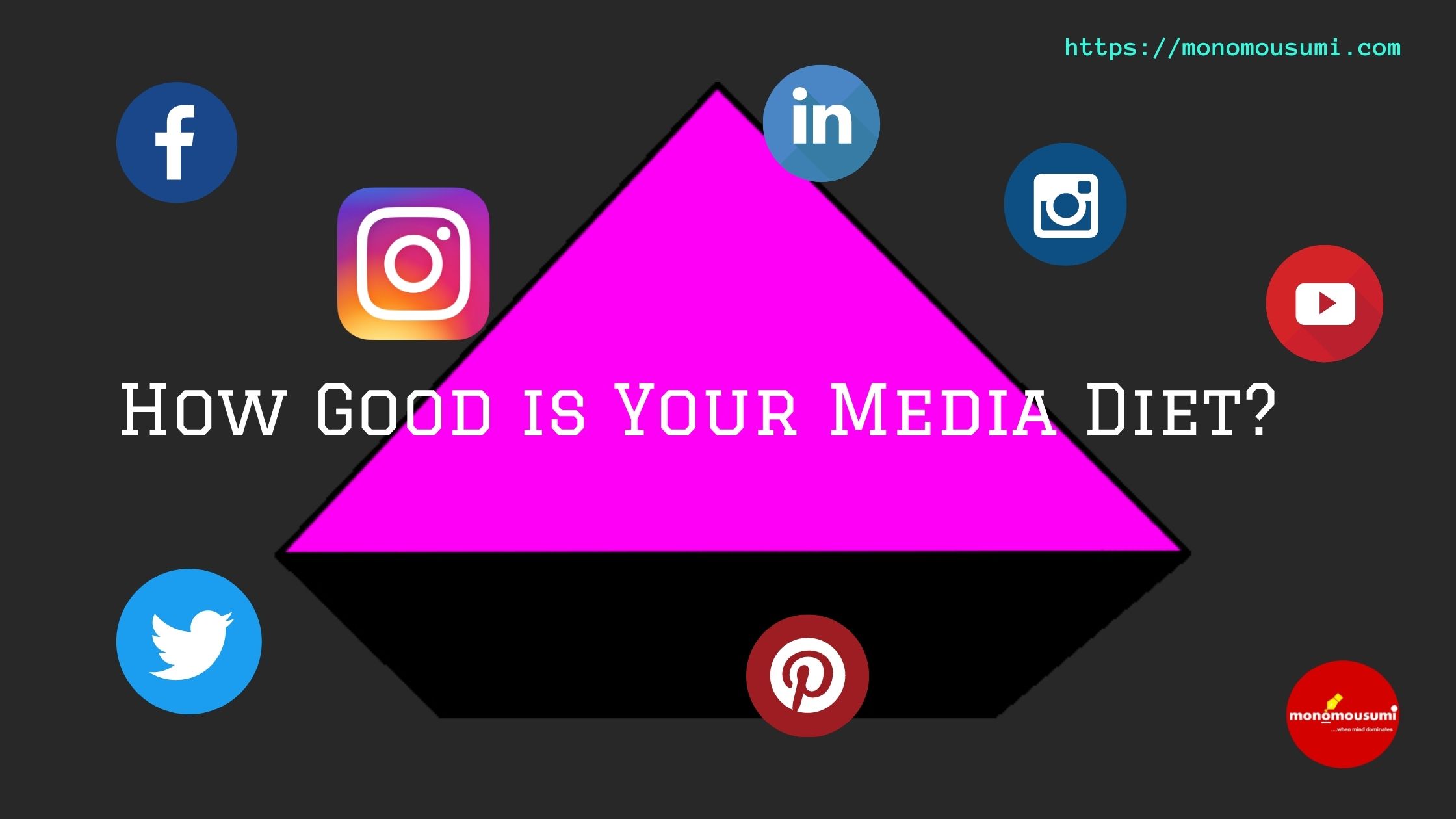
Our diet mainly consists of 3 meals during the day: breakfast, lunch and dinner, with small helpings of snacks in between. Our food habits shape us, we are after all that we eat. We try to make our food choices as healthier as possible.
But do we control what we consume throughout the day?
Media, the agglomeration of all opinions and information, the hub of entertainment and resources.
It has become a part of our daily routine, you might be using it for 7 hours without even knowing!
When Jim Morrison said, “Whoever controls the media, controls the mind,” he was speaking the truth. People turn to the media for all the answers.
With more technologies that have helped in digital communication, the information that reaches us is increasing.
Our media diet is how much time we spend taking information from sources like Books, Social Media and Televisions.
A healthy media diet is a diverse media diet, one that accommodates and balances all information so that the person can immerse in all the opinions and emerge open-minded. A healthy media diet also leaves enough time for offline and social events so that relationships are not affected.
Of course, the media has a lot of advantages, it has helped us communicate with people who live miles away, for instance, but it does have a lot of impact on our mental health.
And unfortunately, as humans, even after knowing about the adverse effects of negative news, we are more drawn to it than positive ones without being aware of it. That explains why negative news sells more. The negative news is often presented in front of us as a mystery, so we wish to unveil its secrets.
After engaging in those negative sections, we tend to think negatively, resulting in feelings of frustration and depression.
The power of the media is that it can change our opinion, shape our thoughts and ideas, and that, might be the biggest power. No one gets motivated to do something out of thin air, we are inspired by the ideas of others, from what happens in our surroundings.
Media impacts how we think, how we create, how we say and behave. We make opinions based on the information presented to us through the media, on this basis we develop ideas. But we must remember that not all information is true.
Just like there are empty calories in nutrition, junk food and sugary drinks, there are also ‘junk’ pieces of news and information that are ruining your creativity and your health. Why are they made? To earn money and profit.
But why should you be arrested in their traps? And just like nutritious food, why not take nutritious information as well?
Too much media can take a toll on a person’s mental health, but how much is ‘too much’ really?
The Media Pyramid:
Just like we have a food pyramid that has healthy fat at the top and cereals at the bottom, we have a Media Pyramid.
The Media Pyramid is a suggestive way of diversifying our sources of taking information healthily.
Group 1: (Like Cereals, Bread and Whole-Grains)
These are considered the most healthy and boost your creativity. These include Communication apps, Books and Art (All the things fun!). These help us in connecting with the world and don’t stress us as negative news does.
Group 2: (Like Fruits and Vegetables)
These include ways of learning and acquiring new skills. The tutorial videos and the skill-learning videos you see on YouTube are just some examples. Learning facts and journaling are all some examples! These activities should be given around 3 hours. This group also include your hobbies.
Group 3: (Like Milk and Milk products)
Playing games, watching movies and fun videos (yeah, this includes cute cat videos) are all examples of this group. It should be important to note here that the content should not be very violent as studies reveal that people who watch and play violent games are often lonely. They should be given around 2 hours of your daily information dosage!
Group 4: (Like Meat, Fish and Alternatives)
These include mailing, television and similar communications. These can cause mild to moderate stress depending on the time you use, but 1 hour is recommended! Studies reveal that workers feel stressed when they wake up and find hundreds of unread messages waiting for them to be opened and read.
Group 5: (Fats, Spreads and healthy oil)
These should be consumed sparingly, including heavy social media. Social media often creates a feeling of envy and depression. It can lead to low self-esteem and can lead to poor relationships.
Group 6: (Desserts, Sweet and oil-foods)
These should be only taken once or twice a week. This influences a lot on one’s opinion and is often biased, the news is often negative and thus negatively influences the mental being.
Conclusion: When we balance and diversify our media sources, we let our creative juices run and change our ideas into reality!
Healthy choices lead to a healthy life, this statement is true for both our food and media choices!
By Ushmil Rimjha


